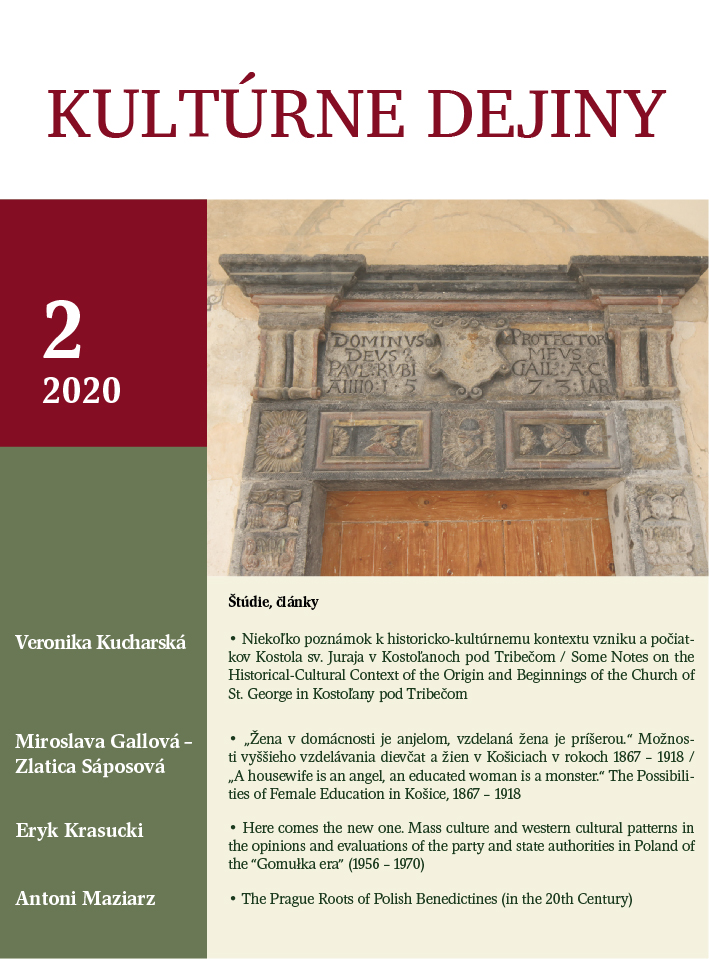Here comes the new one. Mass culture and western cultural patterns in the opinions and evaluations of the party and state authorities in Poland of the “Gomułka era” (1956 – 1970)
Here comes the new one. Mass culture and western cultural patterns in the opinions and evaluations of the party and state authorities in Poland of the “Gomułka era” (1956 – 1970)
Author(s): Eryk KrasuckiSubject(s): Political history, Post-War period (1950 - 1989)
Published by: VERBUM - vydavateľstvo Katolíckej univerzity v Ružomberku
Keywords: People’s Republic of Poland; Władysław Gomułka; cultural policy; mass culture; patterns from Western culture;
Summary/Abstract: This article is an analysis of the situation that emerged in Poland in 1956, with the end of Stalinism, which conditioned the presence of a single model of culture and consciously cut off Polish society from the phenomena characteristic of the cultural and moral reality of the Western world. The late adaptation of mass culture to Polish conditions abounded in exceptional phenomena, which were, on the one hand, an expression of a certain social structure and tradition, and on the other, attempts by the communist party authorities to control it, trying in various ways to counteract its overly open infiltration, which was followed by certain ideological premises, referring to Marxism-Leninism. Based on archives, newspapers, journalists’ works, memoirs, literary works, as well as on literature on the subject, the text brings the reader closer to how the penetration of mass culture, Western cultural patterns in general, was de¬scribed and evaluated by central party authorities. The text does not intend to fully present the issue, which is too elaborated and complex. Rather, I prefer to focus read¬ers’ attention on linking points, in order to present some concrete examples of changes, to indicate new behaviour in the cultural and political space and the chronology of events; hence the arrangement of the text, which is issue-chronological. Hence the analysis of how mass culture was assessed before 1956, how it was defined during the “thaw”, what alternatives were sought, how the party reacted and how it changed the functioning patterns of Polish society. The idea of the linking points results from the fact that the infiltration of mass culture in Polish society is still very rarely taken into account. Therefore, the predominant intention of this article is to initiate comparative research, which could show, based on examples from individual countries under the influence of the Soviet Union, whether and how importan
Journal: Kultúrne dejiny
- Issue Year: 11/2020
- Issue No: 2
- Page Range: 241-261
- Page Count: 21
- Language: English

